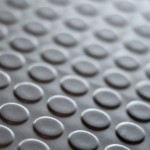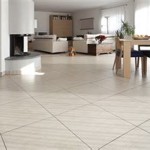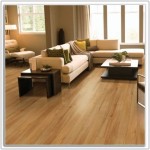Selecting Hardwood Flooring for Stair Treads: A Comprehensive Guide
Hardwood flooring offers a timeless aesthetic, durability, and relatively easy maintenance, making it a popular choice for homeowners. Extending this flooring choice to stair treads can create a cohesive and elegant look throughout a home. However, selecting the appropriate hardwood for stair treads requires careful consideration of several factors, including wood species, construction methods, durability, safety, and installation techniques.
Stair treads experience a substantial amount of foot traffic, making them a high-wear area. Therefore, the chosen hardwood must be able to withstand constant use and resist dents, scratches, and other forms of damage. This article provides a detailed overview of the critical aspects to consider when selecting hardwood flooring for stair treads, ensuring a long-lasting and visually appealing result.
Determining the Appropriate Wood Species
The choice of wood species is a foundational decision in selecting hardwood for stair treads. Different wood species possess varying levels of hardness, grain patterns, and color variations, all of which contribute to the overall aesthetic and performance of the staircase. The Janka hardness scale is a valuable tool for assessing the relative hardness of different wood species. This scale measures the force required to embed a steel ball into the wood, providing a numerical value that indicates its resistance to denting and wear.
For stair treads, it is generally recommended to select hardwoods with a Janka hardness rating of at least 1000. This includes popular choices such as red oak, white oak, hard maple, and hickory. Red oak is a readily available and cost-effective option, known for its prominent grain pattern and moderate hardness. White oak is slightly harder than red oak and offers superior water resistance, making it a suitable choice for areas prone to moisture. Hard maple is a very dense and durable hardwood with a fine, uniform grain, providing a clean and contemporary look. Hickory is one of the hardest domestic hardwoods, offering exceptional durability and a distinctive grain pattern. These species generally offer good value and durability for high-traffic areas such as stairways.
Exotic hardwoods, such as Brazilian cherry (jatoba) and Brazilian walnut (ipe), offer even greater hardness and durability, making them excellent choices for high-traffic staircases. However, these options typically come with a higher price tag. Furthermore, the sourcing of exotic hardwoods should be carefully considered to ensure sustainable forestry practices. Regardless of the chosen species, ensuring the wood is kiln-dried to the appropriate moisture content before installation is crucial to prevent warping, cracking, and other issues.
The wood's grain pattern is another factor to consider. Oak, for example, has a very pronounced grain, while maple has a more subtle grain. Some people prefer a more uniform look, while others appreciate the character of a prominent grain. The color of the wood is also important, and should complement the overall design of the house.
Understanding Hardwood Tread Construction
Hardwood stair treads are typically constructed in one of two ways: solid hardwood or engineered hardwood. Solid hardwood treads are made from a single piece of wood, offering a consistent appearance and the potential for refinishing multiple times over their lifespan. Solid treads are generally thicker than engineered treads, adding to their durability and longevity. However, solid hardwood is more susceptible to expansion and contraction with changes in humidity, which can lead to warping or cracking if not properly acclimated and installed. Proper acclimation involves allowing the wood to adjust to the ambient temperature and humidity of the installation environment for a period of several days or even weeks before installation.
Engineered hardwood treads consist of multiple layers of wood veneer bonded together, with a top layer of solid hardwood. This construction method provides greater dimensional stability compared to solid hardwood, making engineered treads less prone to warping and cracking in environments with fluctuating humidity levels. Engineered treads are also typically less expensive than solid treads. However, because the top layer of solid hardwood is thinner, engineered treads can typically only be refinished once or twice, depending on the thickness of the wear layer. When selecting engineered treads, it is important to choose those with a thick wear layer to maximize their lifespan and refinishing potential.
In addition to solid and engineered options, it is also possible to find hardwood treads with a bullnose edge, which is a rounded edge that provides a more comfortable and visually appealing transition between the tread and the riser. The bullnose edge can be either integral to the tread or applied separately. The chosen construction method should align with the budget, performance requirements, and aesthetic preferences for the staircase.
The dimensions of the treads are also crucial. Generally speaking, treads are around 10-12 inches deep and 36-48 inches wide. However, these dimensions can vary depending on the specific design of the staircase. The thickness of the tread is also important, and should be at least 1 inch to ensure adequate strength and stability.
Addressing Safety and Installation Considerations
Safety is a paramount concern when selecting hardwood for stair treads. Hardwood surfaces can be slippery, particularly when wet. To mitigate this risk, it is advisable to incorporate features that enhance traction. One option is to apply a non-slip finish to the treads. These finishes contain additives that create a textured surface, providing improved grip. Alternatively, installing carpet runners or treads on the stairs can significantly reduce the risk of slips and falls. These soft surfaces provide cushioning and increase traction, making the staircase safer for all users.
The installation process is another critical aspect that can impact the safety and longevity of hardwood stair treads. Proper installation requires careful measurement, precise cutting, and secure fastening. It is generally recommended to hire a professional installer with experience in hardwood stair tread installation to ensure the job is done correctly. A poorly installed tread can create uneven surfaces or loose connections, posing a safety hazard.
During installation, it is essential to use appropriate adhesives and fasteners to securely attach the treads to the stair framing. Both construction adhesive and screws should be used to ensure a strong and lasting bond. The adhesive helps to prevent squeaking, while the screws provide mechanical fastening. The screws should be countersunk and covered with wood plugs to create a seamless and aesthetically pleasing finish.
Building codes often dictate specific requirements for stair tread dimensions and riser heights to ensure safety and accessibility. It is important to consult local building codes and regulations before beginning the installation process to ensure compliance. Furthermore, consider the use of stair nosings, which are the overhanging portion of the tread that extends beyond the riser. These nosings provide a visual cue for the edge of the tread and can help to prevent falls.
Finally, the choice of wood should align with the subfloor. If the subfloor is uneven, it will need to be leveled before the hardwood treads are installed. Failure to address an uneven subfloor can result in squeaky stairs and a less-than-professional appearance. Furthermore, the existing stair structure should be inspected to ensure it is structurally sound before the new treads are installed.

You Want To Install Hardwood On Stairs Reallyfloors America S Est Flooring

Stair Treads Vermont Hardwoods

Hardwood Stair Treads Folsom Woodworks

Bellawood Prefinished Red Oak Solid Hardwood 1 In Thick X 11 5 Wide 48 Length Tread Ll Flooring

Stairs Treads And Risers Hardwood Floor Accessories By Brazilian Direct Cherry Also Santos Mahogany Teak Other Exotic Floors

Matching Your Stairs To Custom Hardwood Floors Carlisle Wide Plank

How To Convert Carpeted Stairs Hardwood Lowe S

How To Make Stair Treads With Prefinished Flooring And Floormade Nosing Rw Supply Design

Staircase Makeover New Wood Floors Update The Inspired Room

Stair Parts Hickman Woods
Related Posts








